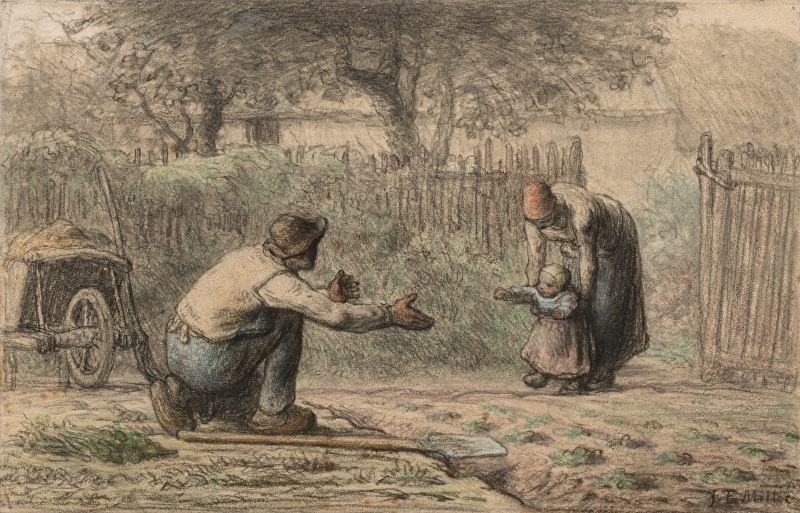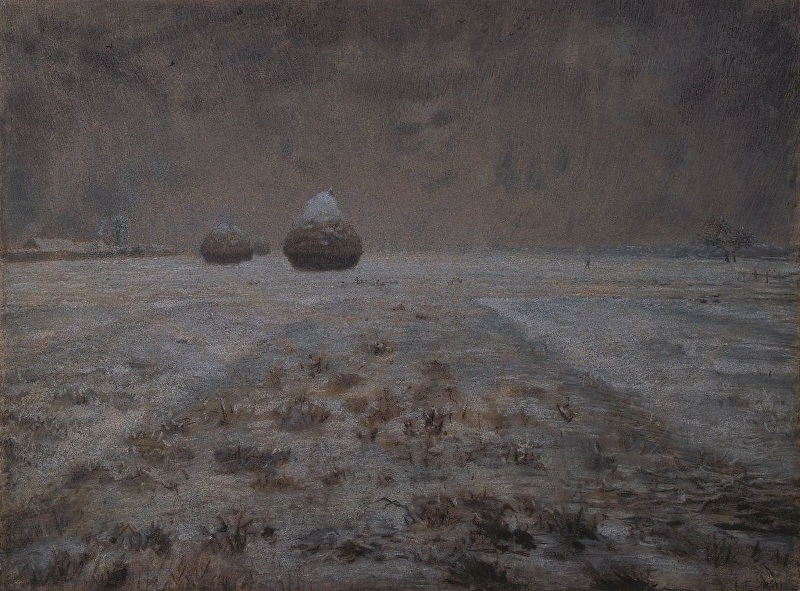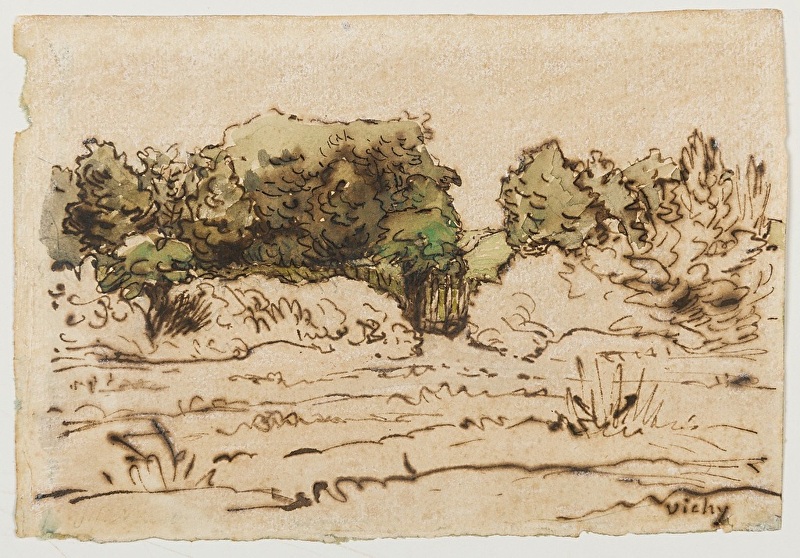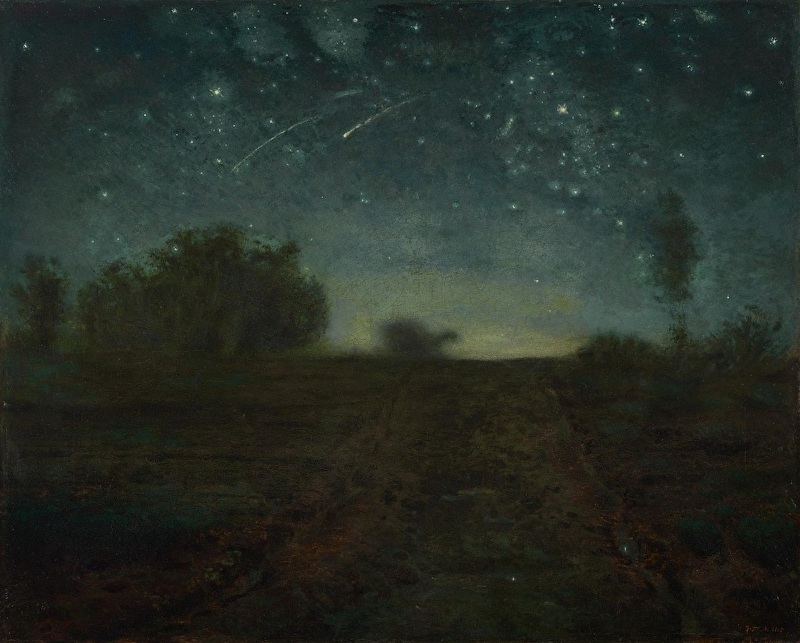"Millet was once much abused by his comrades about a drawing; one of them saying, violently, 'There he is again, drawing from chic' (out of his head), 'and inventing his muscles.' Delaroche, coming in at the moment, said: 'Gentlemen, the study of nature is indispensable, but you must also know how to work from memory. He is right' (pointing to Millet) 'to use his memory. When I began my 'Hemicycle' I thought that letting the model stand, I could get the attitude of my personages, but I soon found I would have very good models, with no cohesion among them. I saw that one must invent, create, order, and produce figures appropriate to each individuality. I had to use my memory. Do as he does, if you can.'"(Alfred Sensier,Jean-François Millet, Peasant and Painter)
Jean-François Millet (1814-1875) was one of the most influential French naturalist painters, both celebrated and debated in his own day for his choice of subject and working manner. Known for his paintings of French peasants at hard labor, his work shows the stark realities of country life whilst still celebrating the natural beauty of the French countryside and turning the peasants into iconic figures. One reason his work is so strong is the manner in which he simplified and solidified forms - study any of his figures and you'll see a minimum of detail in face and clothing, with a focus on the way the overall form of the figure fits into and stands out from the landscape. His forms are monumental and at the same time believable. A significant reason for this was Millet's habit of working from memory, which resulted naturally in an emphasis on the overall 'effect' of his subject and a loss of individual detail. As seen in the quote above, this was a habit Millet started young; even while working from the live model he was applying imagination and the memory of previous studies.
This method of working was a combination of preference - Millet believed that working from his extensive visual memory served him well in allowing him to create paintings that were cohesively realistic, as every aspect of the atmosphere and lighting was subject to the control of his mental image rather than the vagaries of studio lighting - and the practical difficulty of finding models in the countryside. One of his students, a young Canadian named Wyatt Eaton, recorded that, being of a retiring personality, he actually would have worked more from the live model if he'd simply been more comfortable with it:
"His son has frequently told me of his desire to make more studies from the living model, and his regret at not being able to do so. It seemed to be difficult for Millet to approach people that he wanted to pose for him, and this office of asking a peasant man or woman to sit for him always fell upon his wife. But these sittings were never long or tiresome; he wanted only the few facts of form or color which that particular model could give him."





